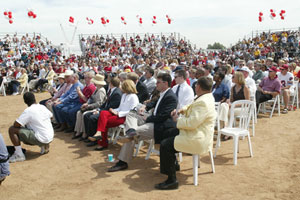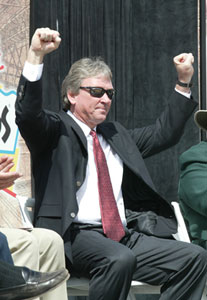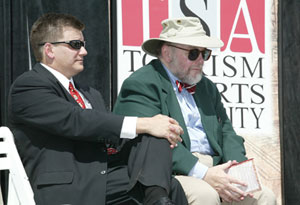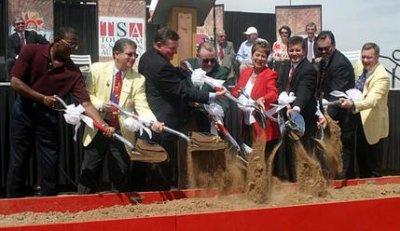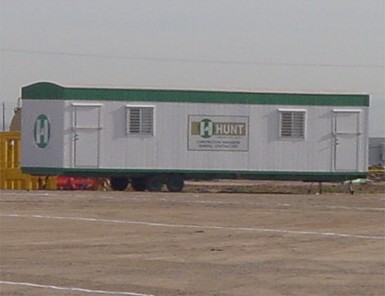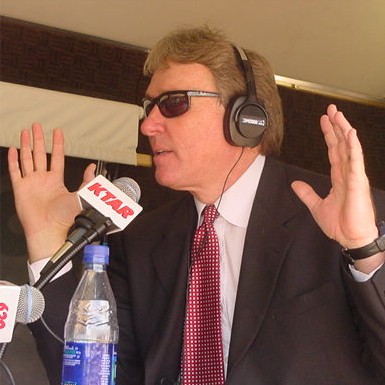http://espn.go.com/nfl/news/2003/0412/1538143.html
Six-year stadium saga breaks new ground
Associated Press
GLENDALE, Ariz. -- After six years of controversy, rejections and snags, there finally is physical evidence that the Arizona Cardinals will have their own stadium.
Team officials, business partners, members of the state Tourism and Sports Authority and politicians used silver-plated shovels to turn spadefuls of earth in a 30-foot sandbox Saturday, symbolically breaking ground on the site west of Phoenix.
The $355 million building is viewed as the future site of Super Bowls, NCAA Final Fours, World Cup soccer, concerts, festivals and conventions. It will rise out of a former alfalfa field 500 yards south of the new Phoenix Coyotes arena, which will be finished in December.
Since moving to Arizona in 1988, the Cardinals have leased Sun Devil Stadium from Arizona State University. A trace of emotion crept into owner Bill Bidwill's voice when he spoke of his family's 73-year involvement with the last NFL team to share a college stadium.
"In all those years we've never had our own home,'' Bidwill said. "That is about to change. This beautiful stadium, complete with retractable roof, America's first roll-out, natural-grass field and redesigned exterior will set the standard by which future stadiums will be judged.''
Architect Peter Eisenman redid the exterior plan last month to give it a more distinctively Arizona flavor. The design takes its cue from a barrel cactus, with alternating vertical glass slots and smooth metal side panels to mirror the way a cactus expands after rainfall. The slots and a translucent fabric roof will distribute light throughout the interior even when the roof is closed for fan comfort.
The Cardinals hope to open the stadium in 2006, with the Fiesta Bowl planning to move its annual bowl game from Sun Devil Stadium to the new venue in January 2007.
"We started in November 1996 on this project,'' team vice president Michael Bidwill said. "We were told early on we couldn't get it done, and I said, 'That's a bunch of bunk, we're going to get it done,' and today here we are. It's been a long, hard fight, but it's been worth it.''
At various times, the stadium seemed headed for Tempe, Mesa or the Gila River Indian Community -- all on Phoenix's east side.
Glendale came to the rescue last summer, but the process was lengthened again by lawsuits that added $24 million to the building cost, increasing the Cardinals' outlay to $120 million. The balance is to be paid by tax-financed bonds sold in February.



